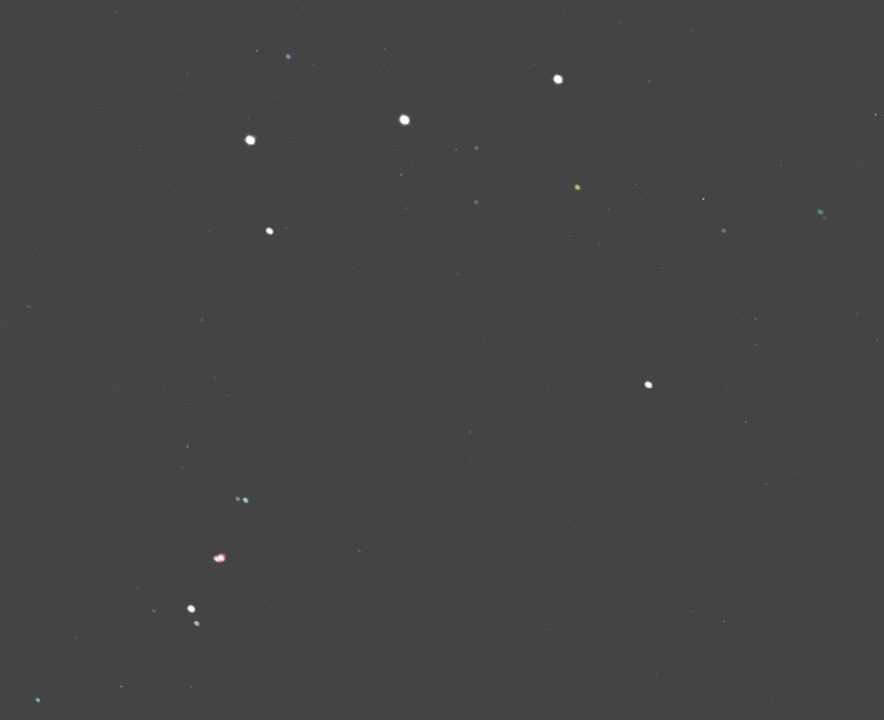Orion's Belt

(The image above only shows the parts of the constellation known as the belt and sword.
The full constellation extends slightly below but quite a long above and to the right of the area shown)
The technical details are similar to the previous image (the Plough) except that in this case the original image was taken using a 135mm lens, at f2.8 for 8 seconds on 800 ASA film.
The image above is approximately 2/3 of the file size to fit your browser screen. Save the GIF image as a file you will a see a little more detail.
The three white stars of Orion's belt are near the top of the picture. Lower down, and to the left, are the stars that make up the sword. You may notice that these seem to be in pairs, with the upper pair of these blue, the middle pair red and the lower pair consisting of one white and one blue. The upper and lower pairs are indeed stars, but the red middle pair is an area of the sky known as the Orion Nebula. This is an area of space where gas is being illuminated by stars within it.
The light from the stars tends to 'burn' the photographic film, because (ideally) the light from each star is landing on the same spot of the film. If we allow a much longer exposure time, but do not move the camera, the path of the stars across the night sky will leave a trail on the film and the colours of the stars (and nebula) will show up much more vividly, as in the image below.

The original image is twice the size you see on the screen and again you will see more detail by examining this external to your browser.
The lines are not perfectly straight, probably due to camera shake, but even without camera shake you would notice that they would not be straight. The whole of the night sky rotates (around a point close to the North Pole star) and star trails become arcs.
We will see this in the next instalment !


